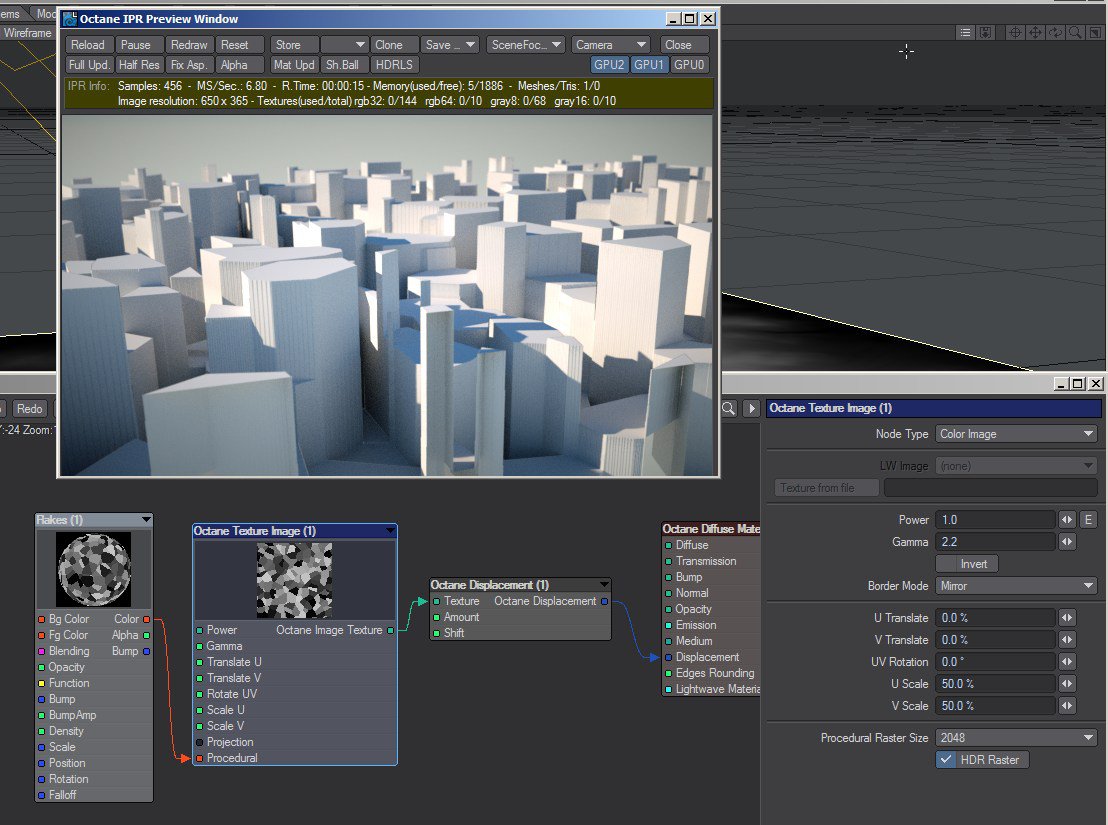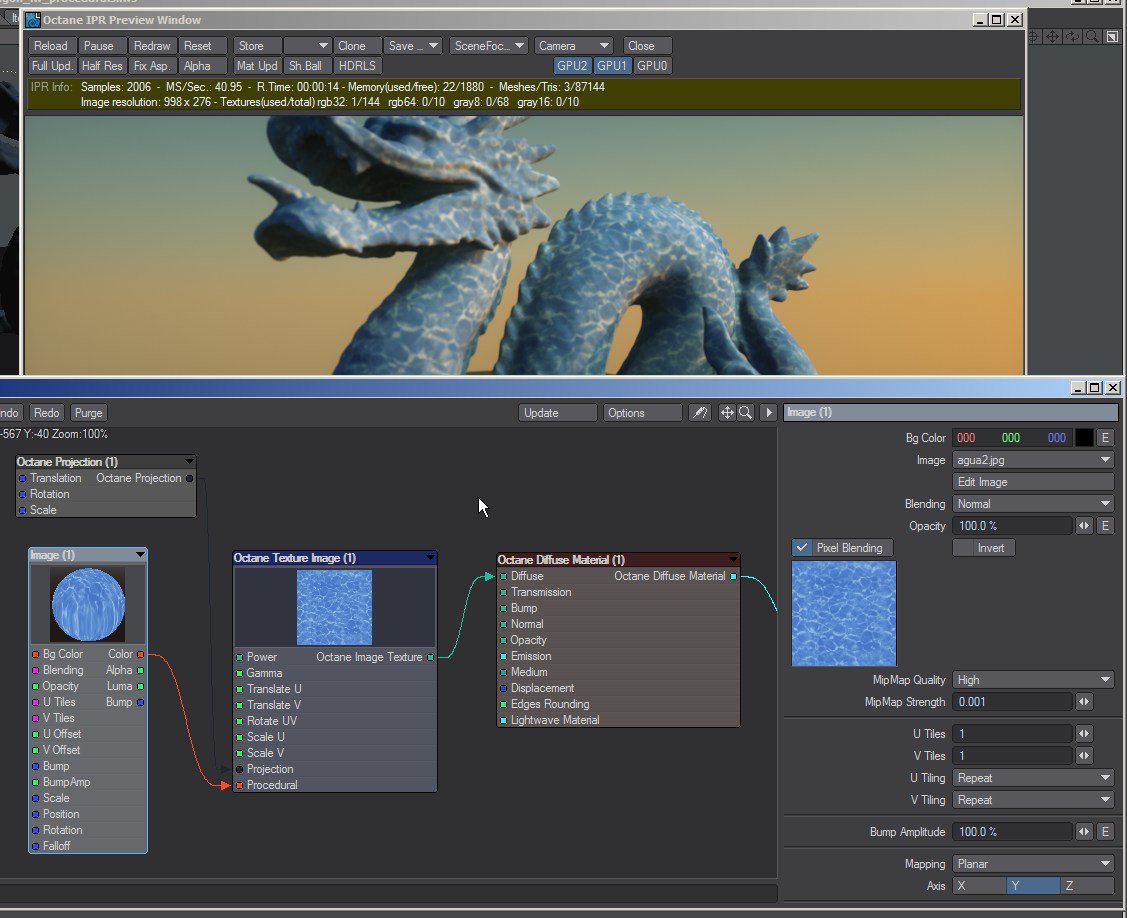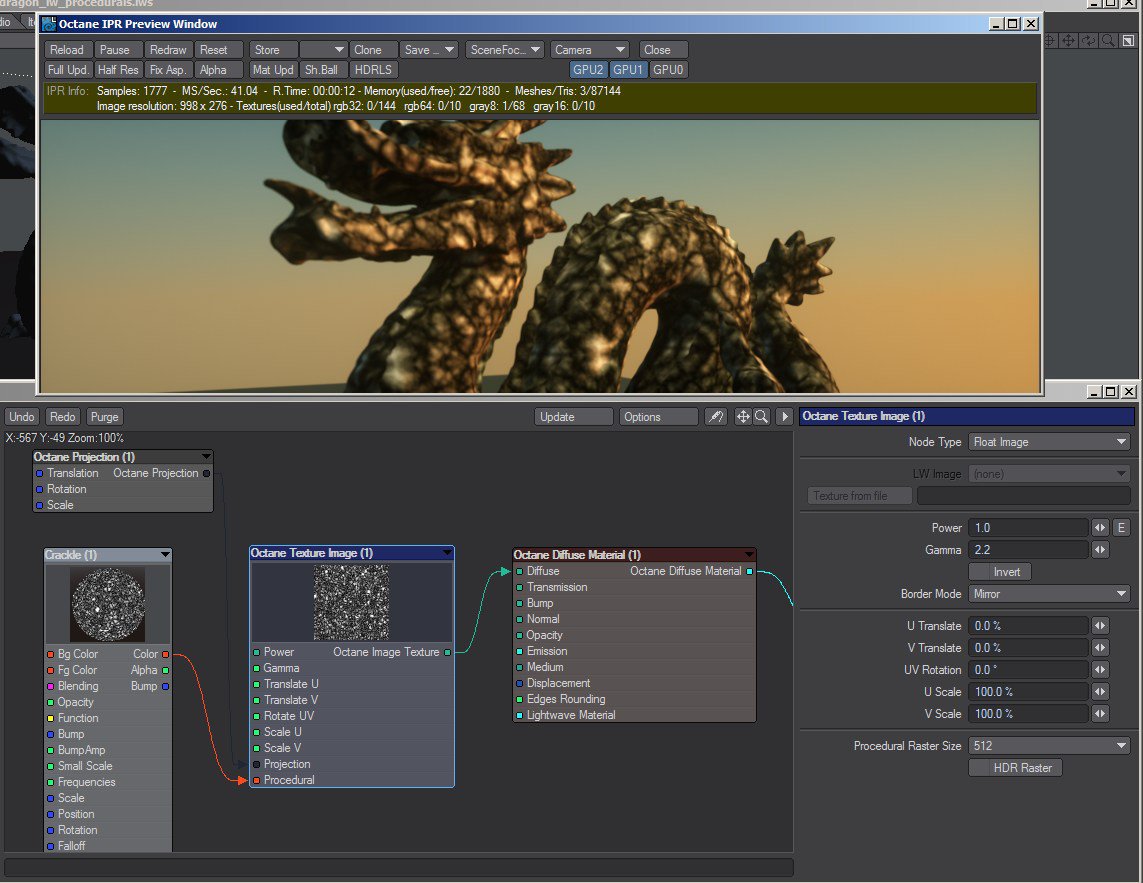
The Octane Texture Image node has a new input to link and support the Lightwave native procedural texture nodes.
The “Procedural” input in the texture image node allows rasterize the Lightwave procedural textures at render time. Rasterizer code is multithread to get the best possible performance. Rasterizer supports color or float image types and should work with all Lightwave procedural texture nodes and with the Lightwave 2D image node (using the planar projection in the Y axis)
The procedurals are converted to a raster texture map, so it’s resolution is limited by the raster resolution. This maps are stored in the GPUThe GPU is responsible for displaying graphical elements on a computer display. The GPU plays a key role in the Octane rendering process as the CUDA cores are utilized during the rendering process. RAM, so be careful about the raster resolution, the use of color images if you only need a gray scale procedural and the number of procedurals you are using in the scene. The procedural is applied over the object using the object UV map or using the projection from an Octane projection node.
This procedurals will not match the behavior of the procedural node in the Lightwave native engine, because they use the object UV map or projection, not the procedural projection parameters avaialble in the Lightwave node. You can set the texture image border mode to “mirror” to avoid seams in the procedural.
In the Texture Image node there are two parameters to control the procedural rasterization:


